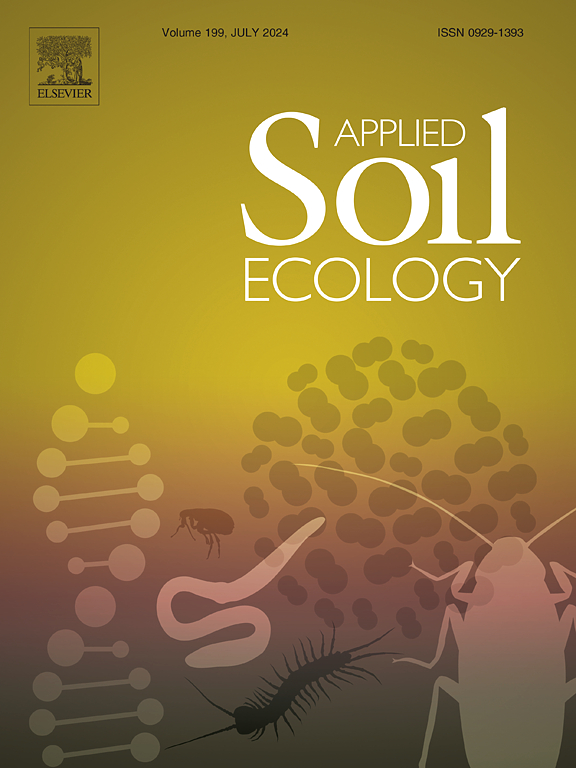Lupin-barley intercropping: Root to root interactions drive nitrogen transfer from legume to cereal
IF 4.8
2区 农林科学
Q1 SOIL SCIENCE
引用次数: 0
Abstract
Intercropping cereals and legumes is a means to reduce fertilizer input in agriculture. Transfer of biologically fixed N often occurs in cereal-legume intercropping and this study aims to understand the mechanism behind. Lupins are legumes of agronomical interest due to their high protein content and effective soil P extraction. However, as lupins are commonly described as non-mycorrhizal the transfer route of N from lupin to barley remains to be elucidated. We investigated the growth and nutrient content of barley intercropped with lupins, to test whether transfer of symbiotically fixed N from lupins to barley occurs, with focus on any role of arbuscular mycorrhizal (AM) fungi in this transfer.
Lupin species and barley were grown in pots (as sole crop or intercropped) ± mesh enclosures restricting mycelial and/or root growth between compartments. Plant growth and AM fungal root colonization were recorded, and plant 15N natural abundance was measured to determine potential transfer routes of fixed N from lupin to barley.
Intercropped treatments showed increased barley growth and N contents, most pronounced if root-root intermingling of the two species was allowed. Also, 15N natural abundance in plants corroborated N transfer from lupins to barley. As lupin roots remained non-mycorrhizal, even in presence of a mycorrhizal donor plant, hyphal translocation of N was unlikely.
We conclude that N transfer from non-mycorrhizal lupins to mycorrhizal barley primarily occurred through bulk flow, stimulated by interspecific root-to-root contact. This may contribute to the success of lupin and barley intercropping.
求助全文
约1分钟内获得全文
求助全文
来源期刊

Applied Soil Ecology
农林科学-土壤科学
CiteScore
9.70
自引率
4.20%
发文量
363
审稿时长
5.3 months
期刊介绍:
Applied Soil Ecology addresses the role of soil organisms and their interactions in relation to: sustainability and productivity, nutrient cycling and other soil processes, the maintenance of soil functions, the impact of human activities on soil ecosystems and bio(techno)logical control of soil-inhabiting pests, diseases and weeds.
 求助内容:
求助内容: 应助结果提醒方式:
应助结果提醒方式:


